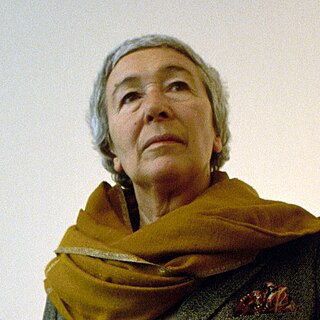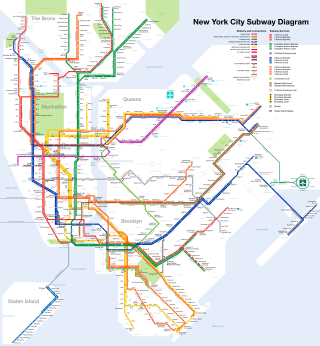
Olivetti S.p.A. is an Italian manufacturer of computers, tablets, smartphones, printers and other such business products as calculators and fax machines. Headquartered in Ivrea, in the Metropolitan City of Turin, the company has been part of the TIM Group since 2003. One of the first commercial programmable desktop calculators, the Programma 101, was produced by Olivetti in 1964 and was a commercial success.
Walter Paepcke was a U.S. industrialist and philanthropist prominent in the mid-20th century. A longtime executive of the Chicago-based Container Corporation of America, Paepcke is best noted for his founding of the Aspen Institute and the Aspen Skiing Company in the early 1950s, both of which helped transform the town of Aspen, Colorado into an international resort destination and popularize the sport of skiing in the United States.

Massimo Vignelli was an Italian designer who worked in a number of areas including packaging, houseware, furniture, public signage, and showroom design. He was the co-founder of Vignelli Associates, with his wife, Lella. His motto was, "If you can design one thing, you can design everything," which the broad range of his work reflects.

Michael Bierut is a graphic designer, design critic and educator, who has been a partner at design firm Pentagram since 1990. He designed the logo for Hillary Clinton's 2016 presidential campaign.
Michael Hertz Associates (MHA) is a New York City graphic design firm, best known for its 1979 design of the New York City Subway map and the station and subway car signage systems that the map engendered. The 1979 map, with some modifications, remains in use today. The firm specializes in maps and environmental graphics for mass transit systems.

Gaetana "Gae" Aulenti was an Italian architect and designer who was active in furniture design, graphic design, stage design, lighting design, exhibition and interior design. She was known for her contributions to the design of important museums such as the Musée d'Orsay in Paris, the Contemporary Art Gallery at the Centre Pompidou in Paris, the restoration of Palazzo Grassi in Venice, and the Asian Art Museum of San Francisco. Aulenti was one of only a few women architects and designers who gained notoriety in their own right during the post-war period in Italy, where Italian designers sought to make meaningful connections to production principles, and influenced culture far beyond Italy. This avant-garde design movement blossomed into an entirely new type of architecture and design, one full of imaginary utopias leaving standardization to the past.

Knoll, is an American company that manufactures office systems, seating, storage systems, tables, desks, textiles, as well as accessories for the home, office, and higher education. The company is the licensed manufacturer of furniture designed by notable architects and designers such as David Adjaye, Harry Bertoia, Ludwig Mies van der Rohe, Florence Knoll, Frank Gehry, Charles Gwathmey, Maya Lin, Marc Newson, Ini Archibong, Eero Saarinen, and Lella and Massimo Vignelli, under the company's KnollStudio division. Over 40 Knoll designs can be found in the permanent design collection of the Museum of Modern Art in New York City.
Paul Scott Makela was a graphic designer, multimedia designer and type designer. Among other work, he was especially noted for the design of Dead History, a postmodern typeface that combined features of a rounded sans serif typeface and a crisp neo-classical serif typeface. With the emergence of the personal computer in the mid-1980s, Makela was among the first to explore digital programs such as Photoshop and Adobe Illustrator. As a result, he created an idiosyncratic, original and highly controversial design aesthetic. In particular, his disregard for clean, modernist, problem-solving design agendas—synonymous with contemporary corporate graphic design—caused much debate among powerful, old-guard designers such as Massimo Vignelli, Paul Rand, and Henry Wolf.
Lorraine Wild is a Canadian-born American graphic designer, writer, art historian, and teacher. She is an AIGA Medalist and principal of Green Dragon Office, a design firm that focuses on collaborative work with artists, architects, curators, editors and publishers. Wild is based in Los Angeles, California.
Graphis, Inc. is an international publisher of books and awards for the visual communications industry. Based in New York City, Graphis presents and promotes the best submitted work in Graphic Design, Advertising, Photography and Art/Illustration. Graphis award competitions are juried by award-winning leading creatives and include: Graphic Design, Advertising, Photography, Posters, New Talent (Student), Packaging and Protest Posters. The award-winning work is published online and in fine art quality hardbound books.
Katherine McCoy is an American graphic designer and educator, best known for her work as the co-chair of the graduate Design program for Cranbrook Academy of Art.

Paolo Venini emerged as one of the leading figures in the production of Murano glass and an important contributor to twentieth century Italian design. He is known for having founded the eponymous Venini & C. glassworks.
Bob Noorda was a Dutch-born Italian graphic designer who lived and worked primarily in Milan from 1954 onwards. His works included design projects for major corporations and large-scale retail chains, publishing houses as well as public works such as the Milan Metro and NYC subway sign and image systems. During his career as a designer, Noorda created more than 170 logos for clients like Feltrinelli, Olivetti, Eni, Zucchi, Touring Club Italiano, Ermenegildo Zegna, and many others.

Jennifer Luce is the principal and founder of Luce et Studio Architects in San Diego, California. Luce grew up in Canada and received her bachelor's degree in architecture at Carleton University (1984) before moving to the United States in 1985. At Harvard University Graduate School of Design, she received her Master of Design Studies degree (1994). She is an IAA Professor, and has the academic position of Lecturer at Stanford University, teaching architecture at the School of Engineering. Luce was elected to the AIA College of Fellows in 2016.

Jay Doblin was an American industrial designer and educator, best known for his contribution to the field of design in particular his work related to systems thinking, design methods and design theory in general. Throughout his professional career Doblin worked with some of the most important design firms of their time including Raymond Loewy Associates, Lippincott & Margulies, and Unimark International, which he founded together with Massimo Vignelli and Bob Noorda. Jay was born in Brooklyn, NY and graduated from Pratt Institute in 1942. He worked for Raymond Loewy from 1942 to 1955 directing the Frigidaire account and designing vending machines for Coca-Cola, razors for Schick and fountain pens for Eversharp. Between 1955 and 1969, and after the resignation of Serge Chermayeff, he served as director of the IIT Institute of Design, a design school founded in 1937 in Chicago by László Moholy-Nagy, a former Bauhaus teacher. After his tenure as director, he stayed involved with school as a professor. Doblin was president of The American Society of Industrial designers (ASID) in 1956 and of the Industrial Design Educators Association (IDEA) in 1962. In 1981 he founded his strategic design planning consultancy, Doblin with Larry Keeley. In 2004, Jay Doblin was awarded the medal of the AIGA. Doblin became part of Monitor Group's innovation practice in 2007, and was acquired by Deloitte in 2013.

Lella Vignelli was an Italian architect, designer, and entrepreneur. She collaborated throughout much of her life with her husband and business partner, Massimo Vignelli, with whom she founded the design firm Vignelli Associates in 1971. She was known for her skill in managing the business of Vignelli Associates, as well as for her architectural and industrial design work.

Many transit maps for the New York City Subway have been designed since the subway's inception in 1904. Because the subway was originally built by three separate companies, an official map for all subway lines was not created until 1940, when the three companies were consolidated under a single operator. Since then, the official map has undergone several complete revisions, with intervening periods of comparative stability.

The Vignelli Center for Design Studies, established in 2010, is a college of design at the Rochester Institute of Technology. Named after the New York City based Italian designers, Massimo and Lella Vignelli, this 15,500 square foot facility also holds the archives of their work as Vignelli Associates.
Carlo Vivarelli (1919–1986) was a Swiss artist and graphic designer associated with the International Typographic Style.
Vignelli Associates was a design firm co-founded and run by Massimo and Lella Vignelli in New York City, from 1971 until 2014. They worked firmly within the modernist tradition, stressing simplicity by using basic geometric shapes and a limited range of typefaces. Their design work, encompassing graphic design, branding and corporate identity, architecture and interiors, and industrial design is considered among the most influential of the 20th century.










